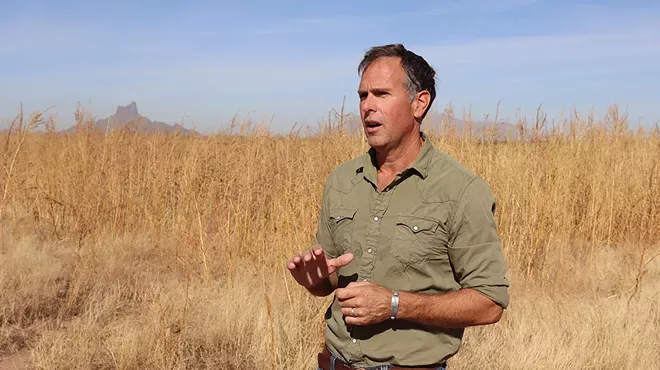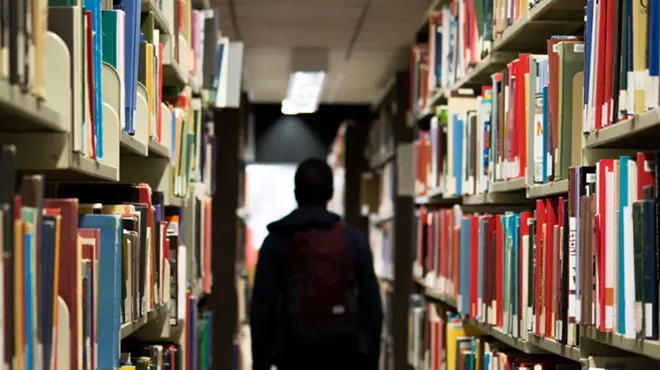Thursday, December 10, 2020
Biosphere 2 study: Tropical forests may be more resilient to rising temperatures than predicted
PHOENIX – Step inside Biosphere 2’s tropical rainforest, which thrives beneath an enormous glass dome, and visitors are met by a wall of warm humidity and lush greenery. The sprawling complex north of Tucson in Oracle provides climate-change researchers with unique opportunities to test theories in ways that would be impossible in the field.
This is where a team of ecologists recently found that tropical forests may be more resilient to rising temperatures than originally predicted. The key isn’t the heat but the humidity, according to the study, which was published in October in the journal Nature Plants.
Biosphere 2 – constructed by Space Biospheres Ventures in 1986 for Earth research and the development of “self-sustaining space-colonization technology” – now is a living, breathing laboratory for University of Arizona scientists.
Marielle Smith, a postdoctoral research associate at Michigan State University and the lead author of the study on tropical rainforest resilience, called the tropical rainforest biome a “bewildering wall of green.”
Smith, who has studied in natural rainforests as a tropical ecologist, said researching in the rainforest biome at the Biosphere 2 – so named because Earth is the original biosphere – facility feels comfortable.
“It’s humid, it’s hot, you’re taking measurements in there and you get a sweat up just like you would in a real tropical forest,” she said.
The enclosed biome in Biosphere 2 allows scientists to control the environment in ways not possible in natural rainforests. With the ability to change such factors as humidity and temperature, the researchers can better understand the impacts of climate change on tropical rainforests, which play a vital role in the planet’s health by absorbing carbon dioxide and releasing oxygen.
The Amazon rainforest plays a pivotal role in combating climate change by absorbing 2 billion tons of carbon dioxide each year, about 5% of annual emissions, according to climatologists. CO₂ is a main contributor to rising temperatures across the world.
“The enclosed environment at Biosphere 2 allowed us to maintain high humidity despite high temperatures by adding water vapor via misters and trapping humidity inside the glass enclosure, which is something that would not happen in a natural tropical forest,” Smith said.
Before the rainforest resilience study, scientists knew that photosynthesis, the process through which plants turn sunlight into chemical energy for fuel, declined as temperatures reached about 82 degrees Fahrenheit. However, Smith and a team of researchers have discovered it’s humidity, not temperature, that most impacts the tropical rainforest.
Scott Saleska, who is a professor at the University of Arizona’s ecology and evolutionary biology department and the paper’s senior author, said temperature tolerance of tropical forest ecosystems has been in question.
“There’s been this debate about what’s the reason for this slow down of photosynthesis,” Saleska said. “(The study) helps give us an answer to why, and it has to do not so much with the temperature but with the dryness of the air.”
Authors of the study said when they studied temperature and humidity separately, it was mostly dry air driving photosynthetic decline in high temperatures.
Just as in natural forests, the photosynthesis process declined as the air got drier. However, when the temperature increased but the air remained humid, the trees photosynthesized steadily, Smith said.
“When we looked at the rainforest in Biosphere 2, we saw that, under some conditions, the trees there were functioning well beyond temperatures currently deemed to be the limit, and even higher than those predicted for the Amazon basin by 2100,” she said.
The authors said Biosphere 2’s tropical forest biome is possibly one of the hottest tropical forests in the world, with temperatures that reach 104 degrees Fahrenheit, the temperature range scientists expect natural forests to reach by 2100 without implementing major climate change mitigation.
“There’s a very tight relationship where the air becomes drier and less humid as temperatures increase,” Smith said.
The study said photosynthesis in extreme heat declines because plants open their stomata – tiny openings in their leaves – to intake more carbon dioxide to make up for low humidity. The plant intakes more carbon dioxide while its stomata are open, but the drier the surrounding air, the more water the plant loses. Because of this, the plant has to balance water loss and carbon dioxide intake.
The ability to separate humidity and heat in studying photosynthesis is possible because Biosphere 2 is enclosed and controlled, she said.
Tyeen Taylor, a postdoctoral research associate at the University of Michigan and one of the paper’s co-authors, described Biosphere 2 as an “experiment to see if you could reproduce all of the earth’s ecosystems on another planet, potentially, and see if we could actually sustain those systems under glass.”
The glass enclosure surrounding the Biosphere’s tropical forest has what the researchers call a “space frame,” which allows them to climb above the forest and drop down into any spot from the frame. Taylor said this makes studying the tropical forest easier.
“In the real world, that is so hard to do and we know that because we climb big trees as part of our work,” he said. “The space frame, the structure that holds up the glass and creates the enclosure, is an incredibly useful tool for gaining three-dimensional access to the entire environment.”
The studies at Biosphere 2 work in conjunction with studies the scientists are doing in tropical forests in Mexico and the Brazilian Amazon. In these forests, scientists have 200-foot-tall eddy flux towers, which measure the exchange of carbon dioxide between the forests and the atmosphere.
“When we looked very closely at the flux tower data,” Smith said, “we could tell that it was the same mechanism that was causing declines in real-world photosynthesis during warm periods as in Biosphere 2. It was the decline in water vapor, not the increase in temperature.”
Saleska said this study is important to the future of climate change research. He said it is necessary to understand environmental mechanisms, like photosynthesis in tropical forests, to make proper climate change predictions. He said knowing the reason for photosynthesis decline as temperatures rise means better climate models for the future.
Although their findings show resilience in tropical forests as the climate warms, Saleska said it does not mean forests are “out of the woods.” The authors said forest health depends on many other factors, such as fire, deforestation and habitat destruction.
“We are already headed deep into the tropical forest danger zone,” Saleska said. “What this study implies … is the good news that we may still have a chance, if we act now, to save these valuable tropical forests.”











